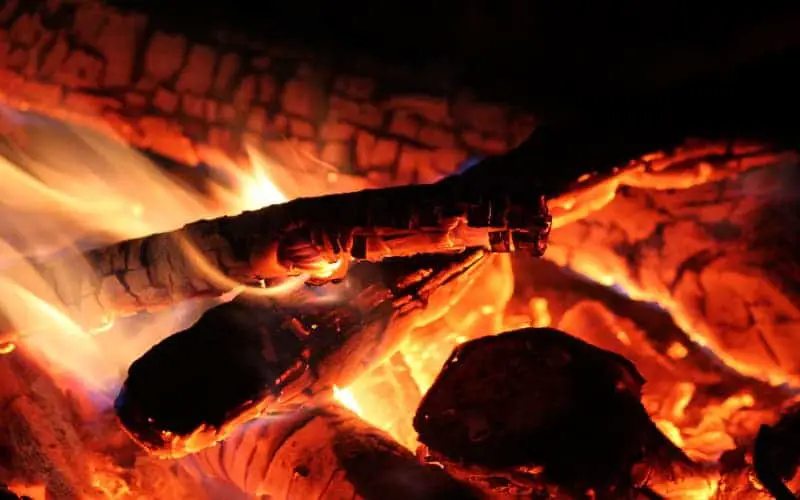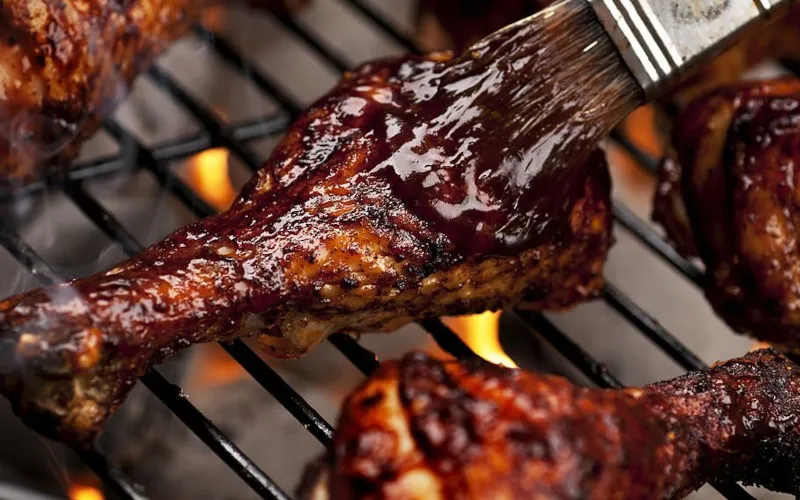Choosing to wrap brisket when barbecuing seems like a personal choice for most chefs, but wrapping the brisket leads to quality results. So, do you wrap your brisket or leave it bare when barbecuing? Sometimes you can start barbecuing it bare and wrap it halfway through the process.
Do you know when to wrap brisket, which material to use to achieve the best results? Read more to learn how to wrap the brisket and why you should opt for wrapping instead of cooking it bare.
Why Do You Wrap Brisket?
Although the brisket is among the most delicious beef cuts, they are tricky to cook. Unlike a steak, they take hours to cook properly, which can cook within minutes in any grill type. You might prepare some hours to prepare the brisket before placing it on the BBQ.
Tending on this meat is time-consuming, and you would be yearning to cook it to perfection. Although you can cook it slow and on low heat, it isn’t easy to cook the meat evenly. Thus, wrapping increases heat distribution leading to evenly cooked brisket.
Wrapping the brisket improves bark development to retain moisture, which improves the brisket’s tenderness. The surface tends to dry out when cooking the brisket on low heat over a long time, leading to a hard brisket that is difficult to chew.
Wraps create thick, crisp bark, a hallmark of brisket perfection.
You can reduce the cooking time by wrapping the brisket, as you don’t worry about losing the moisture as the wrap maintains the moisture. Thus you can cook the meat at high temperatures reducing the cooking time. Reduced cooking time is practical, especially when hosting a party, and thus, you should opt for the suitable brisket wrapping technique.
What is the Texas Crutch?
You must have heard about the Texas Crutch from your barbecue circle, but the term’s origin might be vague. Some people believe the technique was invented in Texas, but barbecuing is a huge part of the culture in the state.
The crutch means the meat reaches ideal temperatures sooner when wrapped, which prevents the brisket from losing moisture when cooking. Although you can let the smoker create the crutch for you, sometimes the brisket loses moisture, making it hard to bite. Thus applying the Texas wrapping method is worth it.
Texas crutch beats the stall, which occurs when the brisket’s temperatures halt for the last hours during cooking.
The stall mostly occurs at 150 degrees Fahrenheit but could happen at various points during smoking. Stalls impact the BBQ quality and lead to uneven cooking resulting from evaporative cooling. As the brisket cooks, it loses moisture which will evaporate from its surface, leading to a cooling effect.
Fortunately, you can beat the stall with the Texas crunch as it warps the meat preventing moisture which could cause the cooling effect from escaping from the cooking meat.
How Does Wrapping Barbecue Work?
Wrapping works by creating a barrier between the brisket meat and the smoker, and it allows the brisket to cook at a high temperature without burning. It reduces moisture loss by forming a barrier, making the meat tender when fully cooked.
Moreover, it cuts down on the cooking time and allows you to do other activities during the festive time. The brisket can hold temperature for a long time; once you remove the meat from the cooker, it might cool down swiftly, but the wrap forms a barrier that prevents heat loss.
Moreover, you can transfer the meat from the cooker to the plates without messing.
How to Wrap Brisket in Parchment Paper?
The parchment paper might be a wrapping alternative for people who want or keep away from aluminum. It is made of cellulose-based product-treated silicone, which gives it non-stick properties. The parchment paper offers a breathable wrapping alternative that can withstand high temperatures.
It also speeds the cooking time without releasing all the moisture as the brisket juice collects on the inside of the parchment paper. The moisture that evaporates helps create a decent moist but not soggy bark.
Unfortunately, the parchment paper is thin and most delicate, and it can tear quickly. Moreover, if the smoker’s heat gets too high, the parchment paper might ignite, but most brands create materials that are heat resistant, and you might not risk ignition.
However, even if the manufacturer claims their parchment is heat resistant, it would be better to inspect the BBQ and avoid high temperatures.
How to Wrap Brisket in Foil?
The foil paper results in softer bark as it retains moisture and has a blocking effect on the smoke resulting in a strong beefy flavor, as the smoke might not get into the brisket. Wrapping with aluminum foil is one of the easiest methods, as the foil is malleable, allowing a cook to wrap it tightly against the brisket.
This method is beginner-friendly as the foil paper is easily found in the stores and easily manipulated. You can use two heavy-duty aluminum foils, and each piece should be arm’s length to cover the brisket effectively.
The brisket should not exceed an arm’s length, and you can start marinating and set them in the smoker until they are ready for wrapping. You can stack the partially cooked two pieces and cover them with aluminum foils. Then wrap the foil paper tightly against the brisket and return them to the smoker and cook them until it attains the right temperature and time before removing them from the smoker.
Although the foil creates a tight seal and makes brisket cooking easy, you should monitor the progress closely, and you can extend the cooking hours or remove the brisket soon, depending on the crisp preference.
How to Wrap Brisket in Butcher Paper?
You can use the butcher paper to BBQ brisket, and some chefs prefer the peach or pink butcher paper as it effectively wraps the brisket. The butcher paper is FDA-approved and thus is safe for wrapping the brisket during BBQ.
The butcher paper is breathable making it easy to cook a soft brisket that is not soggy. Moreover, the paper allows smoke to get into the brisket through the breathable butcher paper.
The butcher paper is treated to avoid falling apart during BBQ and thus will not disintegrate due to smoke and high heat. The pick paper snuggles the meat, forming a protective layer that shortens the cooking time.
You can set out the butcher paper four times longer than the brisket and place some brisket on it. Then cover the meat with another butcher paper on the top. Fold the bottom butcher paper edge over the meat and pull the top paper to create a tight package.
You should attend to all the edges to ensure the folds alight with the brisket; natural contours prevent air pockets in the meat. After creating a snuggly wrap, the meat will be ready to go back to the smoker.
How to Wrap Brisket in Freezer Paper?
Sometimes you can undermine the freezer paper, but it is heat resistant and can withstand high smoker temperatures. However, not all freezer papers are created the same, and you should look for one specifically created with heat resistance.
You can snuggle the brisket with the freezer paper and allow it to cook in the smoker in the same way you do with the foil paper. Some freezer papers don’t allow for moisture, while others have pores that lose moisture, and you can choose ones that meet your needs.
Like butcher’s paper, freezer paper is the best alternative to aluminum foil which can leak metals to the food and parchment paper, which is easy to tear.
When to Wrap Your Brisket?
Although there is no specific time when chefs should wrap their brisket, the right time will depend on several determining factors. But some chefs prefer to warp their brisket after the stall as the brisket would have lost enough moisture, and wrapping would not cause the soggy effect.
You may need to consider these variables when deciding on the brisket wrapping time:
Brisket Size
The smaller the brisket, the earlier you will wrap, it cooks within a short time. A smaller brisket will begin losing moisture within a short time, and the wrap is meant to reduce water loss. For instance, you would wrap a 7-pound brisket after cooking for about 3 hours, while briskets larger than 10 pounds would need twice the time to wrap.
However, if the brisket is cooking slowly due to temperature and other variance, you can adjust the cooking time effectively.
Smoker Temperature
All smokers don’t have similar temperatures; charcoal smokers might have lower temperatures than electric smokers. Moreover, it is hard to maintain charcoal smokers at a given temperature within a given time frame.
Low temperatures mean slow cooking, and it impacts the wrapping temperature. Conversely, brisket smoking at high temperatures means you would wrap the brisket within a short time.
You would take some time to wrap brisket cooking in a charcoal smoker as it takes time to cook. However, if you are cooking in an electric smoker, you can wrap it within a short time due to the high smoker temperatures.
Personal Preferences
Although chefs can guide cooks on when to wrap their brisket, the time it takes to wrap would depend on personal preferences and taste. There is nothing scientific about wrapping the brisket, and some people might not have the patience to wait for the brisket to lose moisture before wrapping.
Some people let the bark guide them when wrapping their brisket, and for a crunchy bark, it would be better to wrap the brisket when it has lost moisture and is thick and deep. You might wait until the brisket comes out of the stall stage when it has lost a large amount of moisture.
However, if the bark does not matter to you, you can wrap it in the shortest time.
You can base the wrapping time on the bark color, as there is a lot of experimenting with brisket wrapping during BBQ. No matter what works for you, you can experiment to find what produces crunchy brisket.
Thus you should always control the cooking temperatures and check the bark all the time to avoid overcooking the brisket before wrapping it.
FAQs
Are There Downsides to Wrapping Briskets?
Although warping briskets reduces the cooking time, it might have some downsides, such as creating a soggy finish. However, to prevent such, it would be better to cook the brisket in a bare smoker until it loses some moisture. Another issue is the smoky flavor, especially if you use a wrapping material like aluminum foil.
When Should You Wrap Your Brisket?
Although you can wrap the brisket based on your chef’s instructions, it depends on personal preferences, the size of the brisket, and the desired outcome. However, it would be ideal for scrapping it after stalling as the brisket will lose adequate water, making it crispy while maintaining the moisture.
Should I Wrap Brisket at the Stall?
You should wrap the brisket at the stall since it would have lost enough moisture at this stage. Thus, wrapping would make the brisket crispy while maintaining the moisture; moreover, the temperature will fluctuate, preventing effective cooking.
How Long Do You Smoke a Brisket before You Wrap it in Foil?
If you are cooking a small-sized brisket like 7 pounds, you can cook it for three hours before warping in the foil paper, and if the brisket is more than 10 pounds, you can cook for twice the time. However, the time narrows down to a cook’s preference.
Conclusion
When cooking brisket meat in the BBQ, you can cook it in a bare smoker for the smokey flavor, but this method can make the brisket dry due to moisture loss. The meat would cook slowly, thus taking up almost all your time.
However, you can wrap the brisket to reduce the cooking time and efficiency. Choosing when to wrap the brisket might depend on the size of the brisket, cooking time and the anticipated results.





